|
It’s a tough time to leave university. But in the face of debt, an uncertain economy and fierce competition for work, these 15 design graduates have, between them, amassed an outstanding collection of innovative and diverse projects: perfect launch pads for life beyond the classroom.
Amy Pliszka
Central Saint Martins, MA Textile Futures
Bees Beside Us
“It’s a beehive that’s designed from the bee’s perspective,” says Amy Pliszka. Her bespoke beehives are based on researching the lives of the industrious little insects. “Bees are essential for food crop pollination, producing medicines, cosmetics, perfumes and much more,” says Pliszka, who believes that giving them a happy home can halt the decline in their population. Every aspect of the design is research-led: the fabric pleats expand as the colony grows, the pattern helps the bees to recognise it as their home and the domed wooden top supports the weight of the honeycomb being built below.
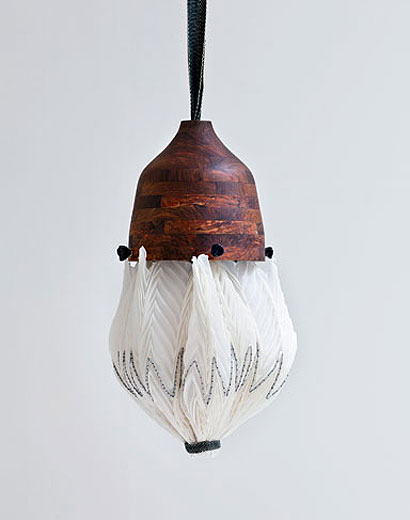
Markus Kayser
Royal College of Art, MA Design Products
Solar Sinter
RCA graduate Markus Kayser spent weeks in the Egyptian desert perfecting the design of his experimental solar sintering machine: a device that melts sand into glass by focusing sunlight on to a small point through a large acrylic lens. Working like a 3D printer, the machine moves along a programmed path, building up the glass form in layers. So far Kayser has created two finished pieces, but he says it’s more about the bigger picture than the products. “It’s about the potential of desert manufacturing,” he says. “Making something that translates the energy and material that already exist in the environment into something real.”
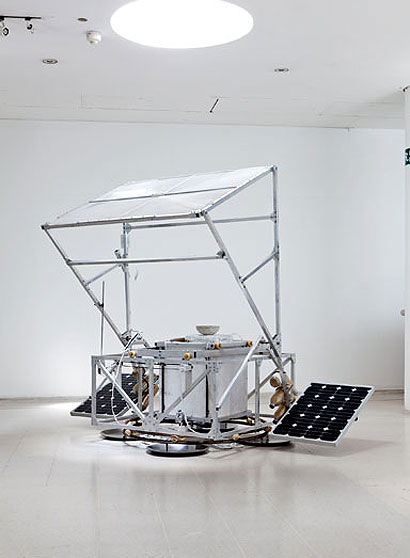
Adrian Bergman
London Metropolitan University, FdA
Furniture Design
Poles Apart
Broomsticks were the inspiration for Adrian Bergman’s modular retail display project Poles Apart. “I was looking at how to construct furniture without using glue,” says the London Met graduate, “and started playing about with a load of broomsticks to see how I could connect them together.” The resulting design is a simple modular system in which ash poles slot through designated holes in rails and surfaces, locking in place with rubber O-rings. The easily reconfigured system is ideal for the changing requirements of a shop, but Bergman says he can also see it being used in urban homes where living space is at a premium.
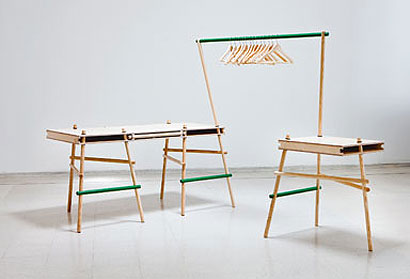
Priyanka Gaitonde
Central Saint Martins,
MA Textile Futures
Nano Cookbook
“I’ve taken my material and crafting skills, but I’ve used them to communicate rather than make,” Priyanka Gaitonde says. Her Nano Cookbook is an attempt to dispel myths about nanotechnology through a collection of egg recipes. Although the recipes are fantastical (one produces a variety of synthetic meats while another produces a body-enhancing supplement), they are all based in real research happening in labs around the world. Gaitonde’s investigations are illustrated by objects she’s crafted to aid her explanations, and are accompanied by QR codes
that link to videos.
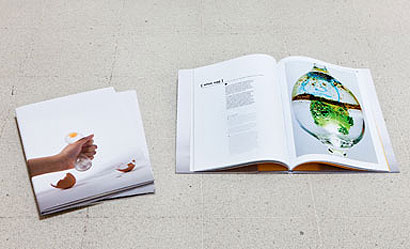
Ben Fursdon
Kingston University,
BSc Product Design
Broo-ver
“It may look silly, but there is a serious edge to it,” says Ben Fursdon about Broo-ver, his delightfully low-tech vacuum cleaner. By stripping the appliance down to its essential parts, Fursdon allows consumers to see how to repair it for themselves. The antithesis of the precision-engineered and technology-drivenproducts that Dyson first gave us a decade ago, the product is a reflection of a society concerned with sustainability and longevity. “We should be able to repair our own products,” Fursdon says. “Things we use every day are ending up in landfill when
they could be repaired.”
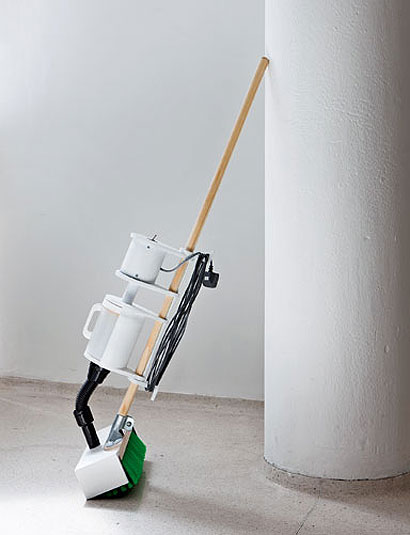
|
|
Image
Peter Guenzel
Words
Riya Patel
|


















